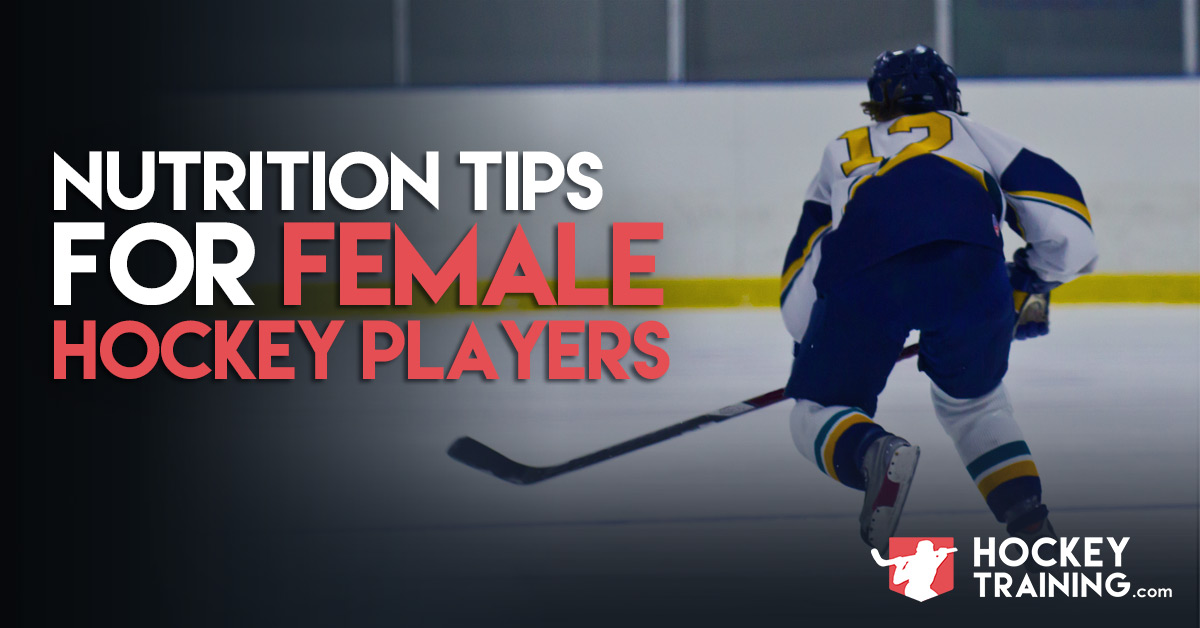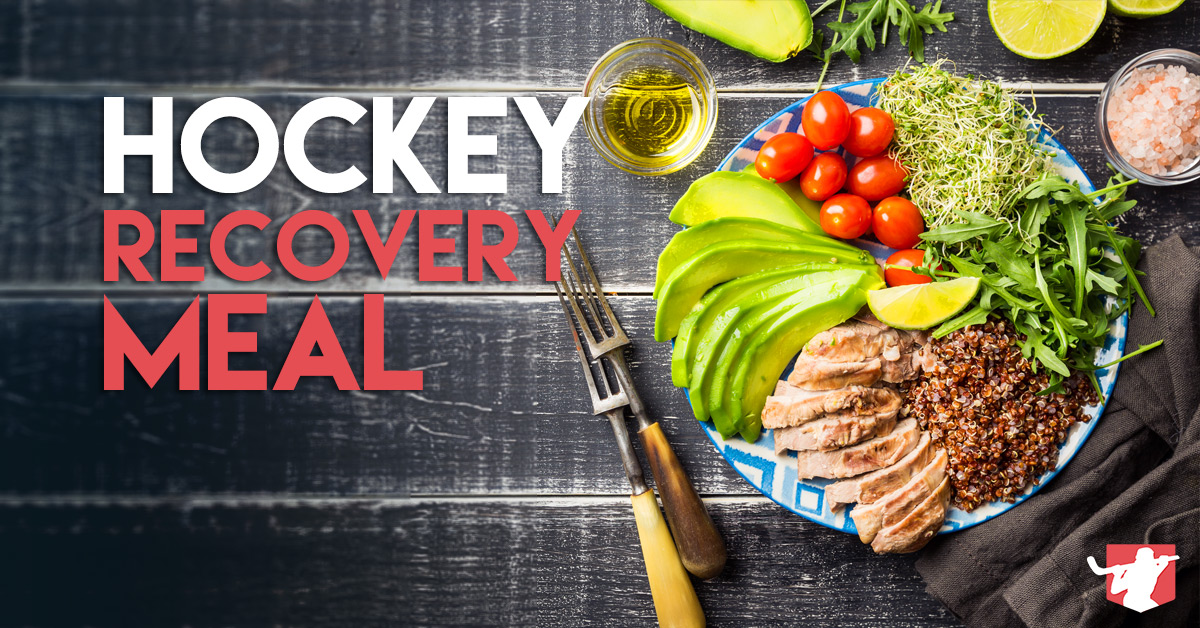In my most recent blog, I busted a whole lot of myths and provided a lot of detail on how females should be approaching their hockey training and the “why” behind all of the recommendations that articulate the real differences between male and female programming.
If you haven’t checked it out yet, I would highly recommend you do so here before moving on with this blog as I will be doing some referencing to the previous blog throughout this one.
90/10
The rule still stands.
90% of what a female should be doing with her dietary intake should represent similar equations to how a male would create his offseason or in-season nutritional programming. But, that last 10% does make a difference out there on the ice.
Just think about it:
If you are 10% faster than your opponent, who’s going to get to the puck first?
If you are 10% stronger than your opponent, who’s going to win the puck battle in the corner?
If you have 10% more endurance than your opponent, who’s going to play a more impactful role for their team in the 3rd period?
How about losing 10% more body fat, or gaining 10% more muscle in your weak areas?
How about recovering 10% faster in between workouts so you can train more often without burning out?
10% may seem a little small to some, but, it’s not so small when you start quantifying what this 10% really equates to out there on the ice and with your off-ice training goals.
Female Athletes and Dietary Fat Intake
Spearheading the primary differences between men and women is dietary fat intake.
In the research, women tend to do much better on all parameters tested having a greater amount of fats in their diet in relation to carbohydrate intake.
Let’s talk about why that is.
In comparison to men, women will burn more fat than men will at identical exercise intensities (Tarnopolsky, MA. 2008). How this works is men will utilize more glucose/glycogen than women will as a primary fuel source during these types of physical activity, whereas women’s skeletal muscle metabolism is more glycogen sparing and relies less on readily available carbohydrates.
This happens for two main reasons:
- Women have much higher total body fat percentages than men even at identical body weights (Wu, B. 2011)
- Women’s skeletal muscle tissue has a greater storage capacity and use for fats than men’s muscle tissue does. This is known as intramuscular triglycerides (fat inside the muscle) and provides readily available fatty acids stored within the lean muscle tissue (Tarnopolsky, MA. 2008).
This smaller reliance on carbohydrate intake plays more into the hands of women doing better on a higher fat intake diet. This becomes especially true since the higher body fat percentage you carry, the worse your body handles dietary carbohydrate intake (Gokulakrishnan, K. 2011).
Chalk one up for women doing well with fats as the main macronutrient for athletic fuel. But, it doesn’t stop there.
Fats have been demonstrated in the research to enhance women’s sex hormone production, specifically their testosterone and estrogen levels (Ingram, DM. 1987).
Since I covered the vast array of benefits estrogen provides women in the previous blog on training, I want to articulate more clearly in this blog why testosterone is not just a man’s game, and why women should care about testosterone as well.
For example, we have an abundance of evidence that points towards the fact that there is a dose-response relationship between testosterone levels and females and their ability to put on functional muscle mass (Sowers, MF. 2001).
More muscle mass for a female in our game means faster skating, harder to knock off the puck, harder shots, and an all-around improved athlete. In many cases, females lack musculature due to certain cosmetic social pressures and an overall unawareness between the parents and coaches not knowing how to properly train female athletes.
Because of this, the females who do have good muscle tissue end up really standing out on the ice as a dominant player as it becomes a big advantage.
Beyond this, testosterone levels specific to female athletes explains up to 90% of how fast they will gain strength and power, which immediately correlates to all things hockey development and on-ice performance (Hakkinen, K. 1990).
To put it short, yes, you do need to care about your testosterone levels as well if becoming the best hockey player you can be is something that is important to you. When I mention testosterone levels in videos or blogs I am not just speaking to the male viewers.
A final note here for the advantages on a slightly higher fat intake for women in comparison to men (you know, if there wasn’t enough already) is the fact that research has demonstrated fat to be 15% more satiating in women than it is for men (Bolhuis, D. 2016). Satiation simply means feelings of “fullness” from a meal. If a food has a higher satiety score, it fills you up more per unit of food than a food with a lower satiety score.
For example, although they are both carbohydrates, you can eat a whole lot more chips than you can of whole apples. Apples will fill you up much sooner, and for a longer period of time. Whereas chips you can pretty much just destroy the whole bag if you really want to.
Why is this important?
Well, nobody really has a weight loss problem. Millions of people lose weight every single year, it happens all the time. The real problem is people can’t seem to keep the weight off once it has been lost.
Cravings go up.
The plan is unsustainable.
Old habits creep back in.
Among many other things. But, when you have food that is providing you a better fuel source for activity it’s likely you will be able to train harder, longer; which will help keep you lean. Moreover, since fat has a 15% greater satiety effect on women than it does men, this will allow them to more easily adhere to the daily intake as they will have greater feelings of satisfaction within their gut-brain appetite
Moreover, since fat has a 15% greater satiety effect on women than it does men, this will allow them to more easily adhere to the daily intake as they will have greater feelings of satisfaction within their gut-brain appetite signaling.
“Ok I got it! Healthy fats can be beneficial for female’s performance, body composition, and health. But how much? What should I do?”
As I’m sure you can respect, this is a pretty tough question to provide an umbrella answer for to an audience this big. But, there are some laws you can follow here.
Protein intake for females should be within the 0.8-1g per pound of body weight range.
And,
Fats should make up 35-40% of your total daily caloric intake.
From there, carbs simply make up the rest of your intake and should preferably be consumed in the post-workout / post-game window.
Are carbohydrates bad for females?
Absolutely not, females should still be taking in carbohydrates each and every single day. But, from both research and personal experience coaching many female athletes, I can tell you they perform better on a slightly higher fat to carb ratio diet.
DO NOT ELIMINATE CARBOHYDRATES, THEY ARE STILL IMPORTANT FOR YOU HOCKEY PERFORMANCE.
Simply have your daily fat intake represent 35-40% of your total daily calorie intake, protein set at 0.8-1g per pound of body weight, and allow your carbohydrates to meet the rest of your needs.
To wrap this up, I want to make the important note that dietary psychology is incredibly important to keep in mind when following any program. I could make you the most scientifically advanced program in the entire world, but if you can’t follow it consistently, it does you no good.
The best meal plan in the world is the one you can consistently follow.
Do not set unrealistic expectations for yourself, and do not beat yourself up for any mistakes you make. Dietary psychology is a big enough topic where I could cover it across a multi-series of blog posts, but for now, just understand that your protein and fat targets have a meaningful physiologic difference than males and will represent itself as you getting that last 10% out of your results in the gym and on the ice.
I hope this helped clear some things up for the badass hockey women out there, as there is not a lot of women-specific content for you on the web.
Until next time ladies!
Train hard and eat smart for your unique physiology.
If you want to get started with one of our hockey training programs click here to see a list of our programs, which are all, of course, female friendly (Yes, even the “men’s league” program)! And hey, if you want to see a female specific program in the future let us know in the comment section below.










Thank you so much for doing this! it really helped. I was wondering does this still apply for a girl in her teens that is still growing or only for female hockey players that have stopped growing
It all still applies for teens that are growing 👍
By eating 0.8-1g of protein of body weight range is that per day or per meal? Thanks!